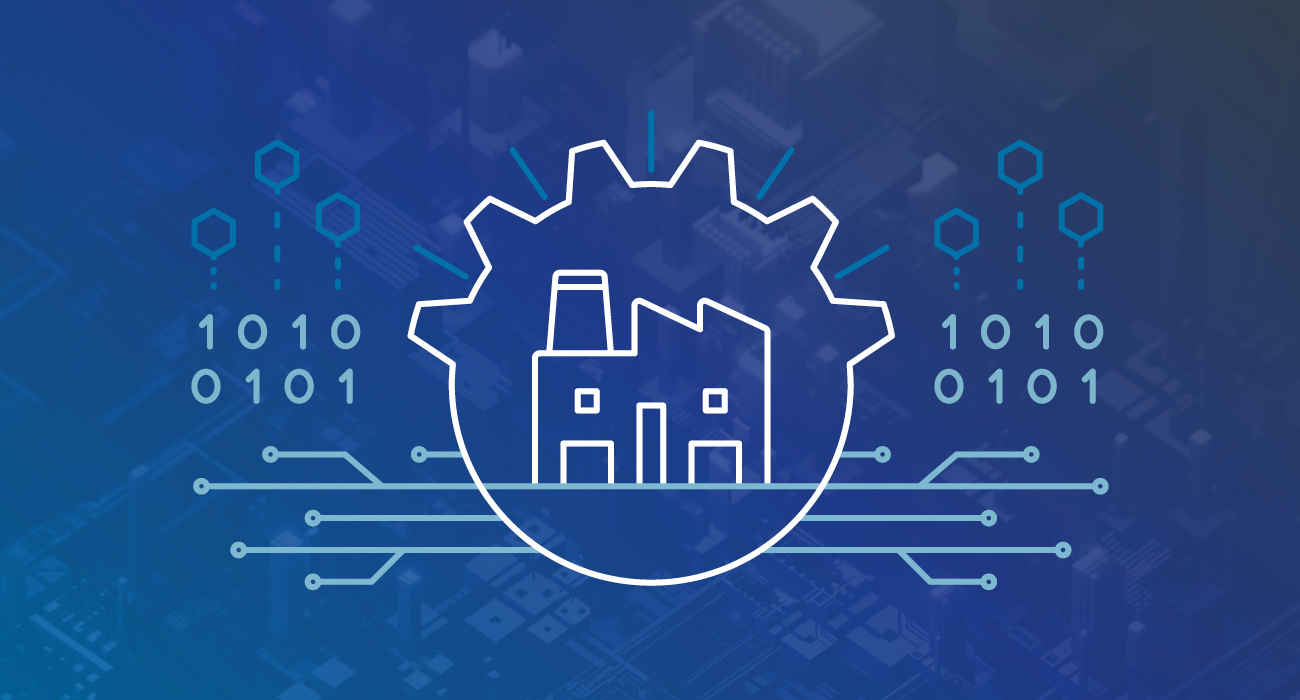The 3 Words That Demystify Digital Transformation

The term “Digital Transformation” is heard so often in the industrial space that it’s taken on buzzword status, but what does it actually mean? Read on for a definition that won’t leave you scratching your head, the three words that clarify the concept of Digital Transformation, and some real-life Digital Transformation examples that show how it all comes together.
What is Digital Transformation and How Did We Get Here?
To better understand Digital Transformation, let’s look back to see how we got to this point. Over the last several years we’ve seen a variety of buzzwords splashed across the headlines. There was The Cloud, which led to Big Data, followed by The Edge and IIoT to collect all this data and bring it into a centralized system. Big Data became Bigger Data, which had people turning to solutions like Machine Learning in the cloud. At this point, if you didn’t have a team of data scientists on retainer, you were told you could still fully realize the power of Industry 4.0 by using AI.
Unfortunately, many companies spent years following these trends without seeing meaningful ROI. While these technologies certainly have value, they are only part of a bigger picture. Digital Transformation isn’t a one-and-done solution, it’s a project management methodology that will be a lens to view all improvements going forward, something to help you effectively apply new technologies in the future.
Ultimately, Digital Transformation is a reality check for the buzzword era. It’s the idea of looking at processes to see room for improvement, then improving those areas by leveraging the technologies from all these other movements. Gone are the days of technology for the sake of technology. With Digital Transformation, it’s being replaced with intentional, methodical, and measurable improvement. To fully grasp what Digital Transformation is all about, think of it in terms of these three key words: processes, people, and programs.

Processes
Industrial organizations each have their own unique process, and the ability to quickly adjust or create new processes is critical. Streamlining processes for efficiency is one of the main opportunities in this area, and the integration of digital technologies such as cloud, edge, or machine learning can help with this.
It’s important to note the distinction between mere digitalization and Digital Transformation. Digitalization simply puts a process into a computer, whereas Digital Transformation revolutionizes how a process is completed. Rather than just tacking on new technologies to your process, you want to see your process from a bird’s eye view, and make holistic changes, with the outcome of tangible results in mind. Explaining this crucial difference to people can be a little challenging, but it makes a huge difference.
Additionally, locating the problem can take time, and scaling out processes can be difficult. Another potential obstacle is the “if it’s not broke, don’t fix it” mentality that is often found wherever there are entrenched ways of doing things.

People
In order for a digital strategy to be successful, you need to take the human factor into consideration. Key stakeholders must be on board with the strategy, and staffing is also critical because you need the right people in the right positions to make it happen.
Opportunity abounds in this area, as communication and collaboration need to be improved across the entire organization. The wider availability of data empowers people to make better decisions, and your workforce will transform as people learn new skills to effectively use the additional data.
As Jan Madsen, Founder of Enuda AB (an Ignition Premier Integrator) said, “The overall purpose of Digital Transformation is, and should always be, to change some human behavior … There's a lot of engineering and a lot of technologies involved in this, but at the end of the day, it's about that: Helping people to make better decisions.”
Some obstacles you might face in this area include fixed mindsets that are resistant to change, and perceptions that Digital Transformation is time-consuming, difficult, risky, has a steep learning curve, or poses a threat to cybersecurity. It’s important to acknowledge these concerns while helping people understand that practical solutions are available.

Programs
Programs are the “digital” part of Digital Transformation, and the main way you leverage new technologies and trends. Think of programs as the tools in your Digital Transformation toolbox. For example, if one of your goals is to improve operational efficiency, you might employ machine learning programs to help calculate efficiency.
When it comes to integrating digital technology, what’s most important is that any new technology you add works alongside what you already have in place, since you’ll mainly be working in brownfield (rather than greenfield) situations. Digital Transformation usually means transforming something that already exists.
Major opportunities in this area include improved operational efficiency, time and money savings, and removing limits imposed by outdated technology. When you’re working with up-to-date technologies, things that before seemed too difficult, complicated, or expensive to attempt suddenly seem easier to accomplish.
Of course, it’s important to be aware of potential obstacles in this area of your Digital Transformation strategy. There’s a risk of downtime and disruption, compatibility issues between new and existing programs, and the simple fact that integration can be downright difficult.
Ignition: An Ideal Platform for Digital Transformation
Inductive Automation’s Ignition software platform brings these elements together for success with your Digital Transformation strategy. Thanks to Ignition’s modular nature, you can customize it to fit your processes, and it has the flexibility to grow with you. It’s a single, unified platform that can be installed on virtually any industrial device or server. Additionally, Ignition works well with programs, it’s fully cross-platform (works with any major OS), and is based on open, standard technologies like SQL, MQTT, and OPC UA.
When it comes to concerns people often have about Digital Transformation, Ignition has solutions to put their minds at ease. If it seems too time-consuming, difficult, or risky, you might test drive Ignition with a fast, easy, and little-to-no risk trial. If the worry is a steep learning curve, Ignition’s Quick Start and access to free educational videos via Inductive University might be the answer. And if cybersecurity is a concern, Ignition’s ability to allow data access while supporting first-class security infrastructure is a reassurance.
Digital Transformation Examples Powered by Ignition
To see how this all plays out in real time, here are three examples of companies that used Ignition to digitally transform their processes, people, and programs for the better:
- Edge Computing: DSI Innovations, an Ignition Premier Integrator, worked with Ennis-Flint, a leading maker of pavement marking solutions. By using Ignition to collect data from mixers out in the field, and bringing that data up in a centralized system, they easily identified an issue with one of the feeders and immediately got started on a fix. Learn more here.
- Plant Floor: SugarCreek, a packaged food manufacturer, went from using day-old data, to having full visibility of everything going on across six sites in real time with Ignition. This resulted in a 100% improvement in OEE over seven months. Their culture has also evolved, with ideas, engagement, and innovation coming from more people in the company than ever before. Learn more here.
- Enterprise: R.J. Reynolds, a tobacco company, first used Ignition simply to discover where some bottlenecks were in their process, but went on to leverage the software to fulfill their vision of a digitally connected enterprise. The result was a stock growth of around 600% over 10 years, and a successful transformation into a world-class operation. Learn more here.
The Future Awaits
Hopefully you now have a clearer understanding of what Digital Transformation really is, and the opportunities and obstacles to look out for when creating a digital strategy. By remembering the three P’s of processes, people, and programs, you’ll be well prepared to truly transform your business and lead it into a very bright future.
To learn more, check out the in-depth article, “What is Digital Transformation?”
To find out how Ignition can help, click here: The Universal Platform for Unlimited Digital Transformation.
